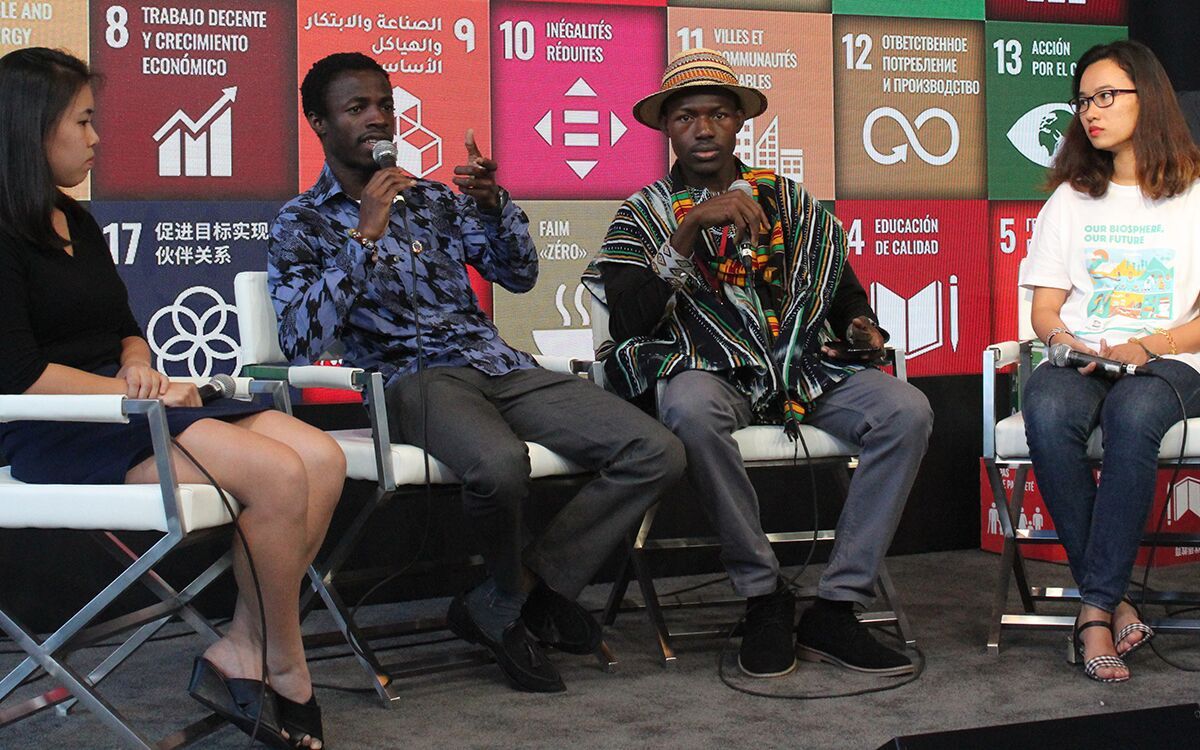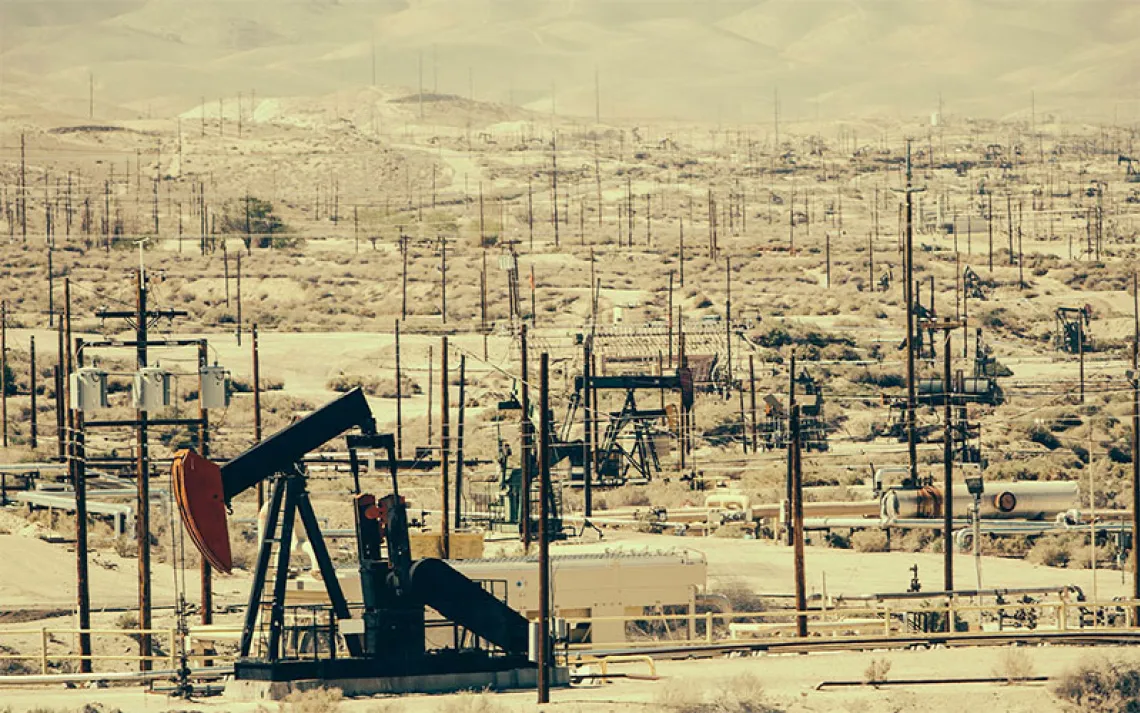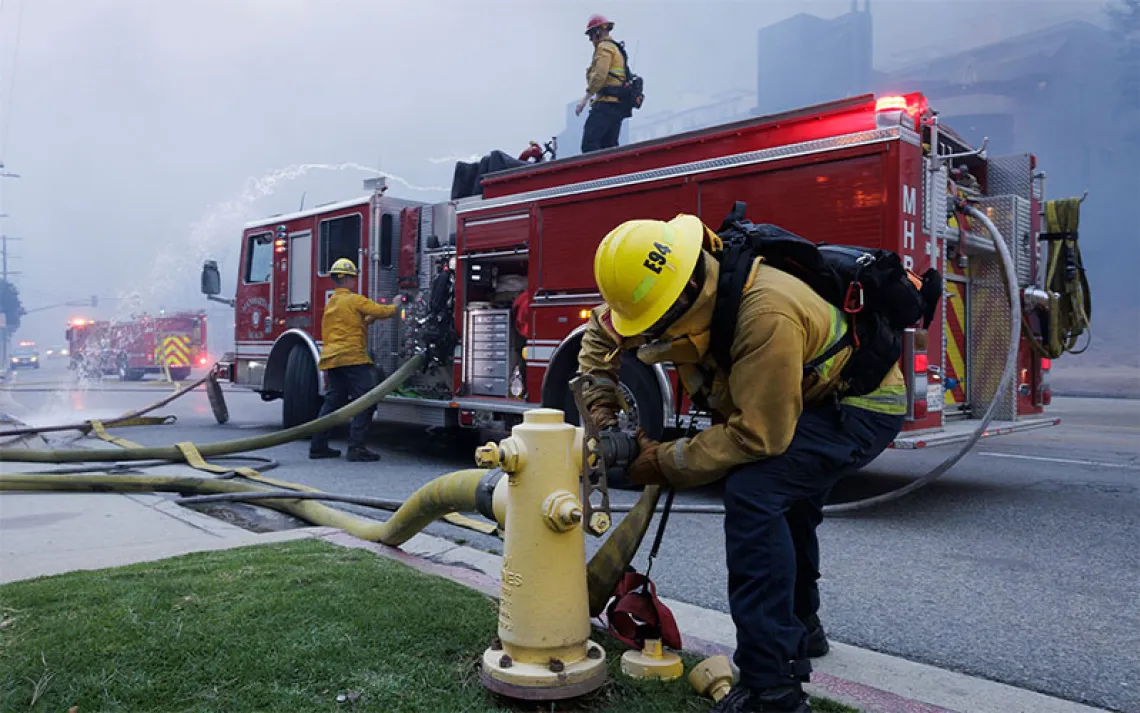Lost in Translation: From Strike to Summit
Inside the first United Nations Youth Climate convening

Swedish environmentalist Greta Thunberg and UN Secretary-General Antonio Guterres at the Youth Climate Summit | Photo by AP Photo/Eduardo Munoz Alvarez
On Friday, September 20, youth climate justice activist Vic Barrett told a crowd of hundreds of thousands in New York that the day’s historic mobilization was only the first page of a new story, “a story in which our constitutional right to a safe climate is recognized by the highest courts. A story in which the most vulnerable people are given the greatest protections.” Then he prophesied, “In 2030, the history books will show that facing imminent destruction, people on the front lines fought back. That starting on this day . . . the momentum became unstoppable.” Cofounder of the Sunrise Movement, Varshini Prakash, followed him on stage. “This is a glorious strike,” she said in a tone that evoked tough love. “But the fight continues tomorrow, and I want to see you there.”
For certain young people, that meant attending the first-ever United Nations Youth Climate Summit on Saturday, which Secretary-General António Guterres had announced in response to the global climate strike in March. But according to some of the youngest activists in attendance—those who have played instrumental roles in bringing the youth climate strike phenomenon to the United States—the transition from the streets to the conference room was jarring. Cofounder of US Youth Climate Strike Isra Hirsi told Sierra that the energy felt a little flat at the summit. She had been hoping to meet other teenage activists from across the world but found herself surrounded by mostly 20-to-30-year-olds. At least five teenage activists who had planned to attend the youth summit did not make it to New York because of last-minute visa complications, according to an announcement by youth organization Earth Uprising—including 15-year-old Leah Namugerwa of Uganda and 17-year-old Nasratullah Elham of Afghanistan.

Sign up to receive Sierra News & Views
Get articles like this one sent directly to your inbox weekly.
With this action you affirm you want to receive Sierra Club communications and may vote on policy designated by the Sierra Club Board.
Given the change in venue, the lack of activist energy from the previous day’s climate strike was probably inevitable. Desmond Alugnoa is 29 and has been attending global climate convenings since COP22 in 2016. He says the format of the largest assembly hall meetings can be frustrating, because speakers tend to be constrained by short speaking windows. This was the case in the largest sessions at the youth summit—in the Trusteeship Council room—where presentations throughout the day covered flashy solution-oriented topics, like storing data in the DNA of plants, but in rapid succession that left many young people wanting to engage in more in-depth discussions. At this pace, “you come back the next year with the same questions,” Alugnoa says.
Many attendees, Alugnoa included, were of the mindset that the summit was a massive networking opportunity, a place to get up-to-date on climate-related innovations, and also, “to make sure we are not working in isolation and not duplicating solutions,” Alugnoa says. Kiara Nirhin of South Africa is part of a group of young people that used one of the two-minute speaking windows to announce the same-day launch of a platform called State of Youth. It aims to give young people a stronger collective voice on how to address the UN’s Sustainable Development Goals, which are a list of 17 broad issues like “poverty” and “inequality” that UN programs target. Youth activists are experts in their communities’ circumstances, but there’s a gap between their work and having a seat at the table to influence what issues UN programs and funds target, Nirhin says. “We want to be the backbone or central platform that brings all these people together,” choosing issues to focus on, voting on actionable steps, and delivering concrete requests to people in leadership positions.

Mayumi Sato and Desmond Alugnoa (first and third from left) on a waste management panel at the UN Youth Climate Summit | Photo by Leanna First-Arai
Some of the most constructive conversations happened in the corners and on the floor of lobbies—where groups of the youngest activists took climate strike follow-up calls in circular huddles—and in the small but jam-packed tent just outside of the actual UN secretariat building. On stage in front of a colorful screen showcasing the sustainable development goals, Alugnoa hosted a panel on waste management. One of the panelists, 24-year-old Mayumi Sato, explained how in spite of the Japanese government’s innovation around recycling and incineration technology, Japanese people don’t think critically about the materials they’re consuming. Sato said more broadly that she doesn’t sense the same urgency around climate issues that she sees elsewhere. Although young people in Japan did turn out to strike for the climate on September 20, it was not at the same magnitude as mobilizations in other countries. “One of the biggest issues is that we’re quite quiet. Culturally, we don’t believe in resisting our seniors,” which makes protesting in large numbers rather taboo.
“Then you meet someone from Ghana . . . that’s really doing incredible things,” Sato said, gesturing to Alugnoa. Alugnoa’s trash cleanup efforts that began in university have since turned into an organization called Green Africa Youth. As part of a coalition of environmental groups, Alugnoa helped lead ongoing protests that stalled and then shelved a coal power station slated for the town of Aboano. His organization also educates Ghanaians on eliminating waste while employing out-of-school youths.
Off the panel stage, Sato said she isn’t expecting groundbreaking changes from the Youth Climate Summit, but she was excited by the possibility to interact with world leaders in town for the general UN Climate Summit. On Sunday, she managed to meet with Japan’s environmental minister, Shinjiro Koizumi. He was just appointed to the position earlier in September, so Sato thinks he might be more inclined to listen than other more jaded world leaders. In Japan, Sato said, climate change has not yet in and of itself captured enough public attention that people are demanding adequate levels of change. She thinks Japan needs another “mass entry point” through popular culture, which she discussed with Koizumi on Sunday.
But overall, the formal Climate Action Summit on Monday did not allow for many opportunities for youth activists to interact with world leaders, because young people were separated from UN member state representatives. On stage, Greta Thunberg echoed some of the same disappointment expressed by young attendees at the youth summit on Saturday. "How dare you pretend that this can be solved with business-as-usual and some technical solutions," she told the crowd of world leaders, between tears. “With today’s emissions levels, that remaining CO2 budget [to stay under 1.5°C] will be entirely gone in less than eight and a half years."
It remains to be seen whether the energy in the streets will translate into effective decision-making in the halls of power.
 The Magazine of The Sierra Club
The Magazine of The Sierra Club



